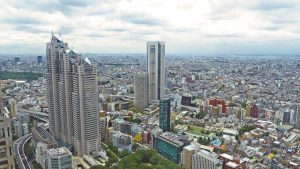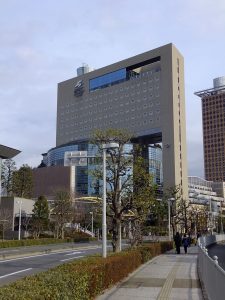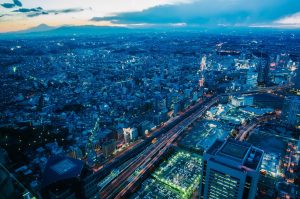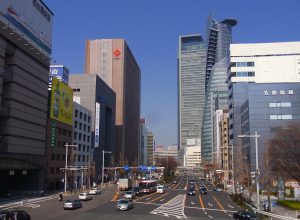In order for us to develop investment strategies, demographic trend is one of key indicators.
I would like to spend time to analyze demographic dynamism and its future trend. Statistic from the government shows the following.
Top five prefectures where demographic growth have found.
1 Tokyo
2 Okinawa
3 Saitama
4 Kanagawa
5 Aichi

1 Tokyo

Why Tokyo ?
- Maturity as city, dynamic and completed infrastructure, concentration of business function, as well as medical facility.
- Regarding child rising, according to the research conducted by Nikkei dual, the top local authorities who have been supporting child rising are in central Tokyo such as Katsushika, Shinjuku, Suginami and Itabashi.
https://hikarinobe.com/contents/child_care_environment-11744
- Nissei Research also released the demographic research data demonstrating that the female inflow has been the demographic growth driver. Tokyo has been dominating in female based city and Kanagawa and Chiba follow to Tokyo.
https://www.nli-research.co.jp/report/detail/id=62042&pno=3?site=nli
Risks?
On the other hand, I would like to point out one trend: decentralization.
Younger generations’ have been flexible in working location. Some influencer YouToubers live outside Japan or regional resort cities. They may create another trend: working from different places in the planate, while keeping good life & work balance.
2 Okinawa

Why Okinawa?
1)Like Latin and catholic influenced culture, indigenous custom does not allow abortion and average number of children in Okinawan family is 2-3, as the birth rate is 1.89. Additionally, previously mentioned, younger generations, engineers, or even retired couples prefer living in Okinawa, pushing up its demography.
Risks?
1) A finding about Okinawa is low wage of local residents. Okinawan’s average annual income is 3.7 mil JPY while that of Tokyo is 4.4 mil JPY. Therefore, a large scale of consumption may not be expected for Okinawa market, although that’s still better figure among Asian markets.
https://clabel.me/incomes/81147, https://doda.jp/guide/heikin/area/
2) Another concern would be the access. Even though the local government has been encouraging the industrial & infrastructural development in Okinawa to be the Asian logistic hub, if flights volume decreases due to the COVID influence, the demographic may be negatively impacted.
3 Saitama

The photo used from this site:
Why Saitama?
- Younger generation increases from North parts in Japan.
- Aged people from surrounding prefectures have moved in to Saitama to access to Tokyo and better medical and wellness condition.
- Non-Japanese residence as workers or students. JP government changed their immigration rules to provide work force in service industries in JP. One of the first steps was accepting non-Japanese students. Till 2019, 310K non-Japanese have come to JP. https://www.mext.go.jp/a_menu/koutou/ryugaku/1412692.htm
- While they study, they work as part time workers. Now a days, we find only non-Japanese works in convenience stores or restaurants, when it comes to central Tokyo.Wage is high in central Tokyo but housing rent is also high, thus they share apartments in adjacent prefectures such as Saitama and Kanagawa. They just simply pushed up the number of residents.
- Additionally, the government functions moved to Saitama and the city has been matured as a political administrative function. The first completion of the urban renewal plan was around 2000, and over past decades, residents growth and maturity have been seen and this dynamism has been reflected in figures.
https://ja.wikipedia.org/wiki/%E3%81%95%E3%81%84%E3%81%9F%E3%81%BE%E6%96%B0%E9%83%BD%E5%BF%83
4.Kanagawa

Why Kanagawa?
- Company HQ s inflow. Teikoku data bank conducted a research and the number one corporate HQ infows, 48 cases were seen in Kanagawa in 2019. Kanagawa has been the number one HQ moving destination for past three years.
https://www.nikkei.com/article/DGXMZO59929730T00C20A6L82000/
- The possible reasons are 1: access to Kansai area as well as Tokyo, 2: relatively cheap fixed cost compared to Tokyo, 3: manufacturing concentration in Yokohama & Kawasaki area, and newly developed infrastructure and residential areas: such as Kawasaki Ward or Minato Mirai area.
- Additionally, Kanagawa is another destination for non-Japanese students to live, taking into account to the access to Tokyo, cheap living cost, and Asian cultured communities.
Any Risks?
3)One negative points to disturb the demographic growth is the earthquake risk. A large scale of demographic concentration have been seen water front area such as Yokohama and Kawasaki. Thus once the large scale earthquake happens, the areas would be exposed to the risk of Tsunami, soil liquidation, and BCP maintenance.
5 Aichi

Why Aichi?
- Residents’ have moved in Aichi from surrounding prefectures such as Gifu, Mie, where the depopulation has been distinct.
- As the large manufacture like Toyota has been based in Nagoya, workers not only Japanese but also non-Japanese have created local community and settled in Aichi.
Any Risks?
- The geographic plates are found along with pacific ocean, Aichi has also been exposed to the earthquake risk. Once the large scale disaster happens, the local people’s preference may be changed.
Thus, the top five population growing prefectures are as follows;
1 Tokyo
2 Okinawa
3 Saitama
4 Kanagawa
5 Aichi
Further queries or doubts, please email to ytomizuka@abrilsjp.com
News Letter subscription is here










